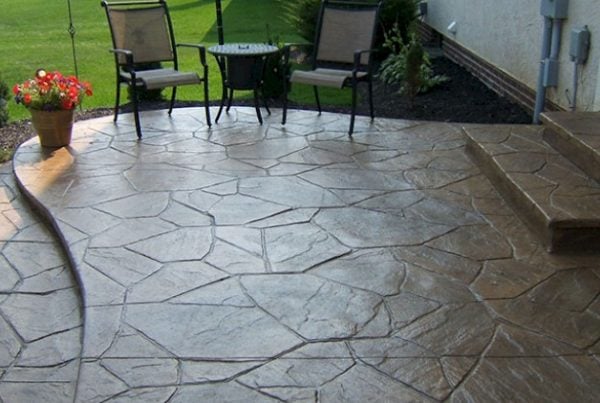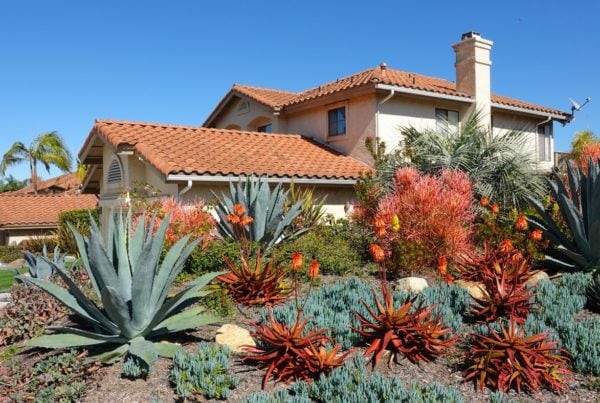If your yard has a hill or slope, you face some frustrating landscaping challenges. Because sloping terrain is under a constant assault from gravity, it has a hard time retaining soil, grass and water. Read on to learn how you can combat this all-too-common problem and get the yard you’ve always dreamed of.
Terracing
If your sloped yard has consistent trouble with runoff and erosion, or you have trouble accessing gardening areas, terracing can be an effective solution. A simple and ancient idea, terracing involves leveling the ground of a hillside in sections so it has flat portions which stack above one another similar to stairs.
Besides leveling the sloped land, terracing requires the placement of retaining walls to hold the level terraces in place. This could be timbers, concrete, stone or railroad ties. Once the land is leveled and retained, you can plant beautiful tall grasses or a vegetable garden. You could also add shrubs, install sod for a “mini yard”, or plant low-maintenance, drought-resistant plants. You could even combine every concept into a diverse but beautiful landscape.
Once you terrace a sloped yard, your landscaping options drastically expand. Unfortunately, without terracing, you will have fewer choices and more complications.
Without Terracing, Your Options Are Limited
While terracing is the most popular and effective way to landscape challenging sloped land, it’s not the only option. If you decide to let grass and vegetation cover your sloping land without much intervention, you can bring some order by constructing some stairs. Whether you choose concrete or wood, this garden feature is a clever way to improve the aesthetic of a sloping landscape, especially if it’s surrounded by beautiful plantings on either side.
 It’s very important to select the right plants for sloping land because the soil tends to be drier since water drains downhill. Drought-tolerant plants and trees are best. Perennials are also a good idea, as are native plants which have evolved to adapt to the local conditions of your area.
It’s very important to select the right plants for sloping land because the soil tends to be drier since water drains downhill. Drought-tolerant plants and trees are best. Perennials are also a good idea, as are native plants which have evolved to adapt to the local conditions of your area.
Before you start ripping out existing vegetation, carefully study the area. It’s fine to remove invasive plants that are difficult to control. On the other hand, you should retain trees and plants that provide shade and help hold the soil together. If you don’t like the look of existing vegetation, you can try to complement them better by planting some shrubs and other plants.
Again, because sloping hills have a hard time retaining water, you are likely to have difficulty getting especially thirsty vegetation to grow. In many instances, people can’t even get grass to take root and flourish due to excessive soil erosion and runoff. This is why it’s so important not to strip away plants with deep roots that may be keeping soil in place. All too often, homeowners inadvertently make a sloped landscape even more inhospitable for vegetation by pulling up brush and shrubs that were holding everything together.
If you aren’t sure which plants might be helping to keep sloping soil intact, contact a professional landscaper for advice. Better yet, think about having your sloped yard terraced, so you can expand your landscaping options and avoid the headaches that come with cultivating and nurturing sloped land.
Things to Consider
While terracing can be an especially effective way to landscape a hill, it must be done properly to ensure a safe, stable surface. Terrace walls should not exceed 4 feet in height. Therefore, it’s important to carefully plan the number of terraces needed for a specified area of land. The distance between each retaining wall should be at least double the height of the walls themselves to keep from putting too much stress on the materials that make up the walls. So 2-foot-tall walls, for example, would need 4 feet between them. If this type of arrangement is not possible because of the steepness of a slope, you will need to consult a reputable professional to ensure that the new terraces are stable and safe.
At RMPS Landscaping in Castle Rock, we provide a complete spectrum of expert landscaping services, from water features and hardscaping to stonework, trees, outdoor lighting, terracing, sod and total landscape renovations. Contact our attentive team to learn how we can help turn your boldest vision into reality.





